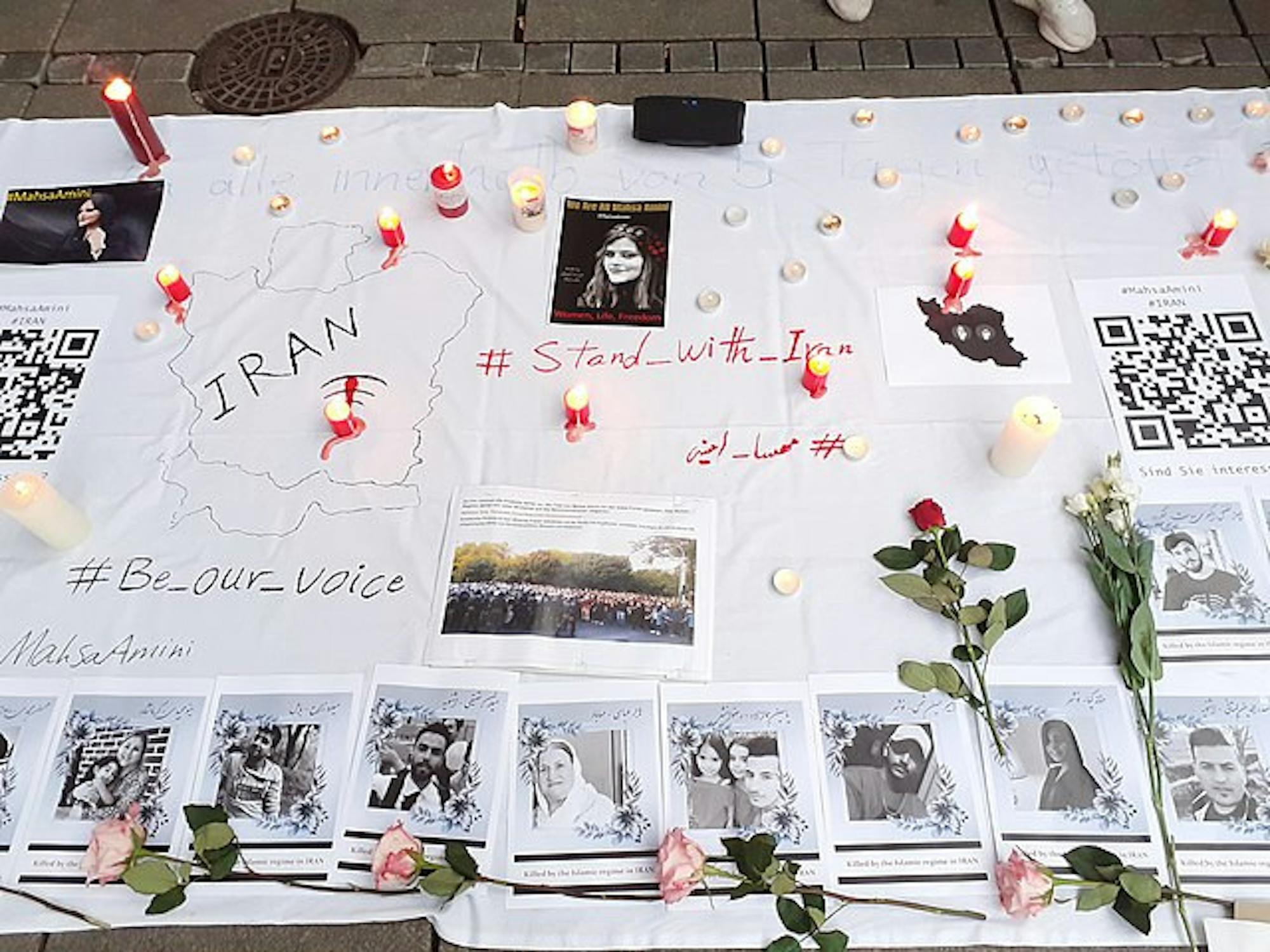Hundreds of protestors gathered at Boston Common on Oct. 1 in response to the death of Kurdish woman Mahsa Amini in Iran. Amini, a 22-year-old who was arrested by Iranian police in Tehran for wearing her hijab too loosely, died on Sept. 16 after allegedly being beaten by police.
Amini’s death has sparked protests around the world, including several across the United States. Dyan Mazurana, a research professor and the co-director of the Gender Analysis and Women’s Leadership Program at the Fletcher School of Law and Diplomacy, said that years of disdain for the Iranian government’s treatment of women have fueled protests.
“[Amani’s death] was the match on the tinder that was already there,” Mazurana said. “It really is an outpouring and an outrage by the younger people of Iran, led by young women and college students, university students, on how they are sick and tired of the restrictive life that they live.”
Iranian dress code laws require women to cover their hair tightly and dress modestly in loose clothes. These laws are enforced by the so-called “morality police,” who were responsible for arresting Amini. Since Amini’s death, many women in Iran and around the world have cut their hair and shed their hijabs in defiance of the Iranian government’s laws.
“We’ve never seen anything at this scale before in Iran, where hundreds and hundreds — if not thousands — of women are pulling off their hijabs and burning them, and then holding up their long hair and cutting it off, saying, ‘Oh, it’s my hair that’s bothering you? Here, in your face. I’m gonna cut it off,’” Mazurana said.
In 1936, Raza Shah Pahlavi banned the hijab in an attempt to Westernize Iranian society. According to Mazurana, the hijab serves as an emblem of women’s rights — or the lack thereof — in Iran.
“The Islamic headscarf, the hijab, in Iran is a very powerful symbol of women’s rights and how the country views women [and] of women’s freedom or lack of freedom,” Mazurana said. “[For] decades, the hijab, whether women are forced to wear it or forced not to wear it, has really been at the center of a lot of conflicts over national identity.”
Although protests have raged on in Iran and across the world for weeks, no single opposition leader has emerged as the face of the movement, making it harder for the regime to end the protests entirely, according to Mazurana.
“The current [Iranian] regime is very good at violently suppressing any kind of organized leadership in opposition to it,” Mazurana said. “But the thing is, these protests don’t have a leader.”
MIT Lecturer and Middle East Historian Pouya Alimagham said that burning hijabs has also become a form of political resistance against the Iranian regime.
“[Hijab burning is] not necessarily a statement against religion, although for some it could be,” Alimagham said. “It’s a rejection of the state. The state has made the hijab an emblem of its authority, so [protesters are] burning the emblem of the state's authority in a way.”
The Iranian government has responded to the largely nonviolent protests with extensive force, cutting off internet access in many areas to suppress organization and media attention and attacking peaceful protestors at Sharif University of Technology in Tehran on Oct. 2.
“We’re seeing live bullets, we’re seeing a lot of tear gas, we’re seeing violent beatings, we’re seeing mass arrests [and] we’re seeing disappearances,” Mazurana said.
SMFA Professor of the Practice and activist Neda Moridpour has organized a petition calling on the Tufts administration to sign a letter of support for the people of Iran, which garnered over 100 signatures in two days. Moridpour has also collected over 2,000 pieces of artwork in solidarity with the people of Iran and hopes to publish or make an exhibit of the artwork in the future.
“As an Iranian and an academic leader, I find it my duty to organize and raise awareness about this crisis,” Moridpour wrote in an email to the Daily. “Without addressing injustice against oppressed ethnic groups, there will be no gender justice for all women. And as University students, staff and academic leaders, it is our responsibility to educate ourselves and others and organize for social justice however we can.”
The Tufts Women’s Center, the South Asian Political Action Community and the Persian Students Association hosted a phone bank on Sept. 29 to urge Boston Mayor Michelle Wu to make a statement in support of the protests.
In recent weeks, Harvard students have urged their administration to make a public statement of solidarity. Alimagham pointed out the importance of universities across the globe unifying in support of those in Iran.
“It’s important to go [to protests] and show solidarity, but really … they have to see other universities as their peers,” Alimagham said. “When there’s an Iranian government raid on Sharif University of Technology on Sunday, then statements from universities can have a lot of meaning. … They could boost morale … and the Iranian government hates bad PR.”






